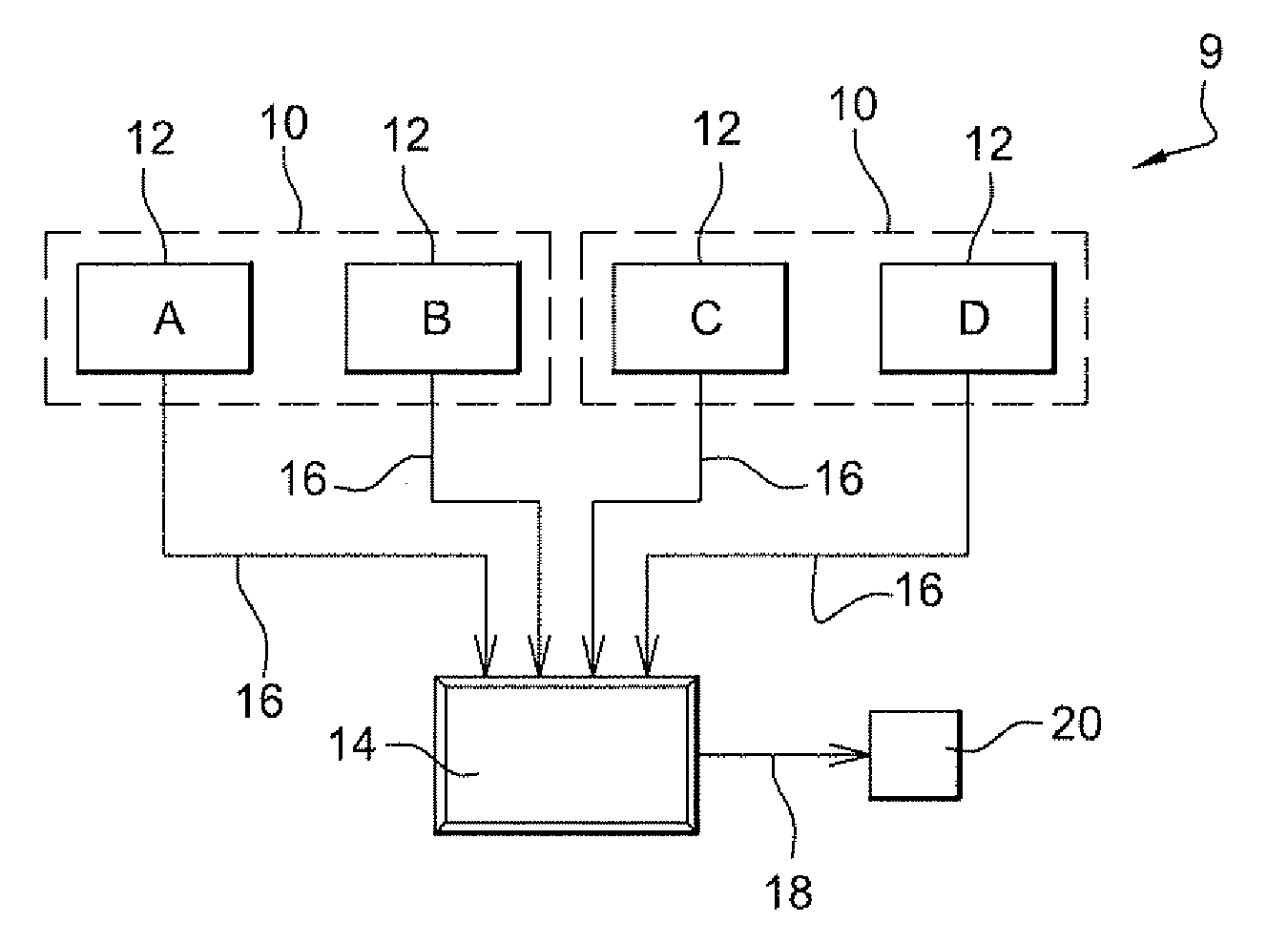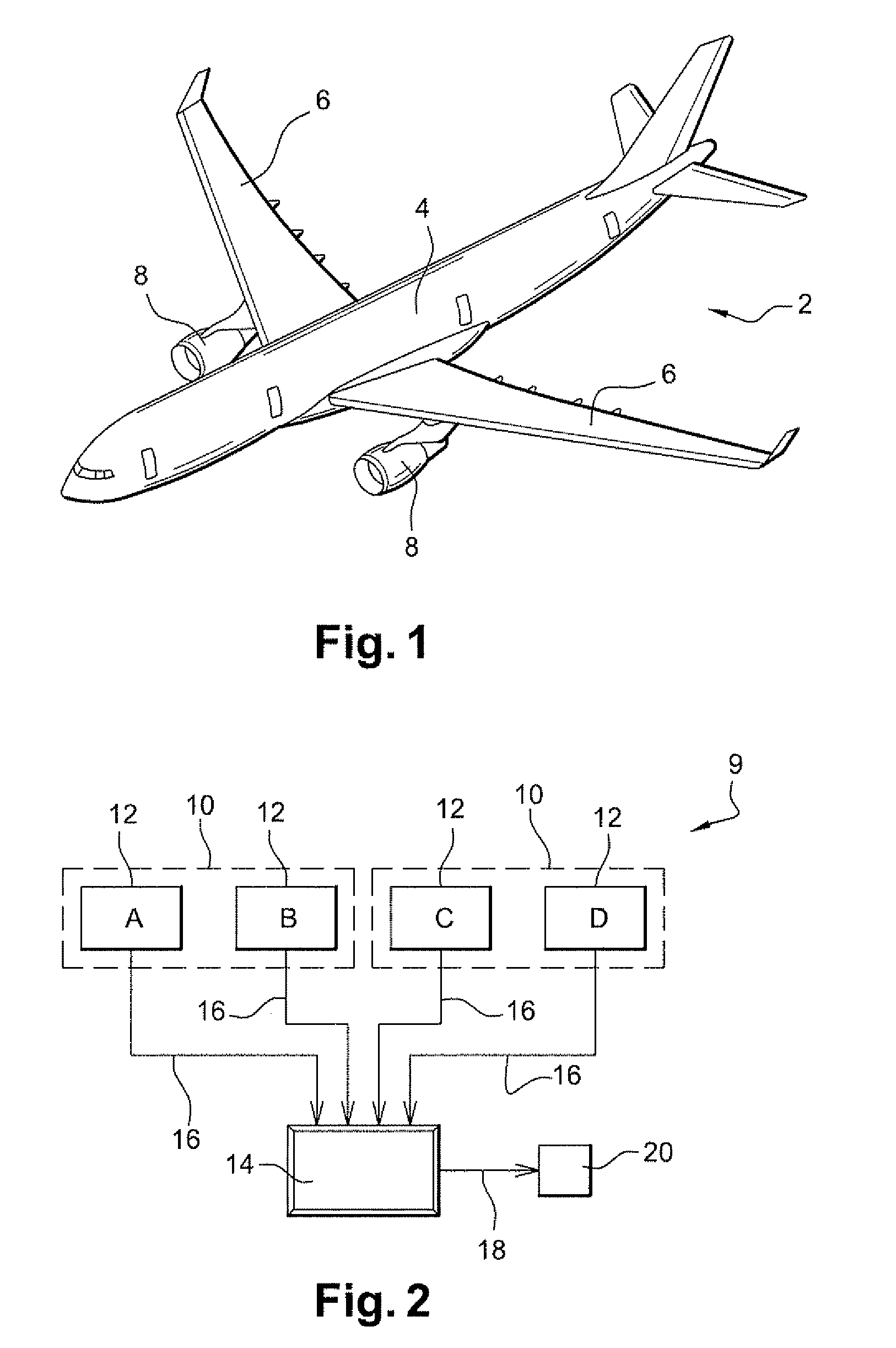Method of controlling an aircraft, the method implementing a vote system
a technology of voting system and aircraft control, applied in the field of controlling aircraft, can solve the problems of no longer being able to forwarded commands, no longer being able to achieve unanimity, and not tolerating the slightest failur
- Summary
- Abstract
- Description
- Claims
- Application Information
AI Technical Summary
Benefits of technology
Problems solved by technology
Method used
Image
Examples
Embodiment Construction
[0106]In the present example, the vehicle 2 on which the method of the invention is applied is an aircraft, and more precisely an airplane having a fuselage 4, two wings 6, and jet engines 8, there being two jet engines in this example.
[0107]The airplane has on-board computers suitable, at least under certain circumstances, for controlling the aircraft in full or in part. Control may also be provided in full or in part by one or more pilots. There follows a description with reference to FIG. 2 of a vote system 9 of the airplane 2, which system includes some of said computers.
[0108]Thus, FIG. 2 shows two computers 10, each hosting two software applications 12 so that the total number of applications is four. The system also comprises a device 14 such as a computer hosting an application that performs the voter function or vote organizing function. The computers 10 and the voter 14 are arranged in such a manner that the voter can receive data values 16, referred to herein as “individu...
PUM
 Login to View More
Login to View More Abstract
Description
Claims
Application Information
 Login to View More
Login to View More - R&D
- Intellectual Property
- Life Sciences
- Materials
- Tech Scout
- Unparalleled Data Quality
- Higher Quality Content
- 60% Fewer Hallucinations
Browse by: Latest US Patents, China's latest patents, Technical Efficacy Thesaurus, Application Domain, Technology Topic, Popular Technical Reports.
© 2025 PatSnap. All rights reserved.Legal|Privacy policy|Modern Slavery Act Transparency Statement|Sitemap|About US| Contact US: help@patsnap.com



